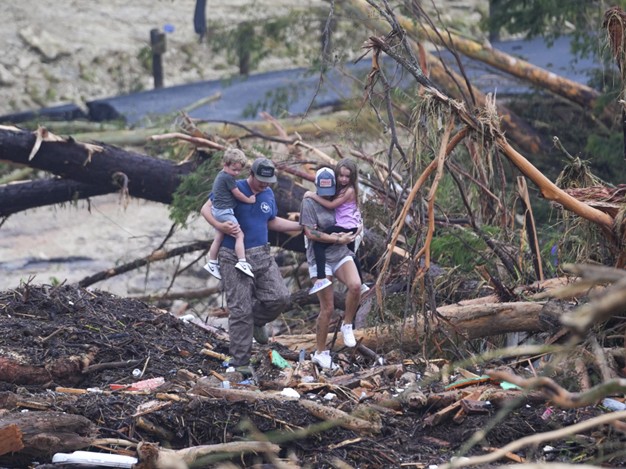
Texas Public Radio’s (TPR) mission is to engage, inspire and inform, bringing people together to better understand their community and world.
Their vision is to be the front porch of Greater San Antonio — a multimedia local news organization and a vibrant, welcoming space where our community gathers to stay informed, shapes the future of our city, and celebrates the culture that makes us unique. As a locally owned
nonprofit, they’re driven by their passion for the community and supported by those who call it home, creating a dynamic hub where everyone is invited to connect, contribute, and enjoy.
TPR invested significant resources in sustained, in-depth coverage of the historic July 4 floods in Central Texas. TPR activated disaster coverage on the morning of July 4, 2025, as catastrophic flooding swept through Kerrville and the Texas Hill Country. Within hours, the state of Texas declared a disaster across 21 Central Texas counties.
Five of TPR’s seven stations serve 13 of those affected counties, reaching up to 2.7 million residents. With a transmitter located in Kerr County — the epicenter of the flooding — TPR was uniquely positioned to serve impacted communities. TPR deployed reporters, editors, producers, and photographers to provide consistent, on-the-ground coverage, made possible in large part through support from the Corporation for Public Broadcasting.
TPR’s reporting extended well beyond immediate rescue and breaking news. Coverage included:
- Regular reporting on local public meetings, press conferences, and state legislative hearings
- Accountability journalism on response efforts and the lack of an early warning system
- On-the-ground reporting from recovery zones
- Human-centered stories showing how residents are coping, rebuilding, and planning for the future
Working closely with The Texas Newsroom and National Public Radio (NPR), TPR ensured both statewide and national audiences had access to this reporting. Given that San Antonio and Austin lie within “Flash Flood Alley”— and that communities nationwide face similar risks — this coverage reached broad audiences across platforms.
In just two months, the newsroom produced 236 broadcast stories and 81 digital stories. More than 40 of these broadcast stories were picked up by NPR newscasts, and over a dozen long-form features aired nationally and were highlighted on NPR.org. Online, flood-related stories generated 629,000 page views on TPR’s website alone.
Looking forward, TPR will maintain a strong editorial focus on flood recovery for at least the next year. The lessons drawn from the July 4 disaster will shape the future not only for millions of South-Central Texans but also for communities across the nation confronting increasingly frequent and severe climate-related events.
Learn more about TPR here.